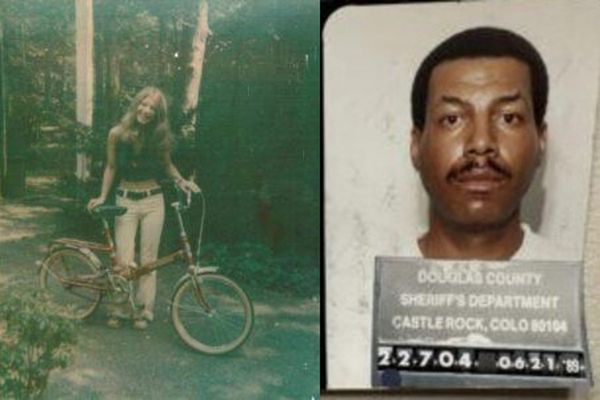LA JUNTA, Colo. — Three historical sites clustered on the bone-dry plains of southeastern Colorado have drawn new attention to hard truths around century-old massacres and a wartime prison, an opportunity local leaders are seizing to expand tourism that explores the lessons of the past.
At one site, the Colorado National Guard and the Colorado Fuel and Iron Company attacked striking immigrant coal miners and their families who’d just endured the state’s snowiest winter in tent camps. They’d risked their lives in defiance of company owners, including John D. Rockefeller, who paid insufficient wages and forced workers to live in company housing and buy food in company stores. More than 20 people died, including 11 children, in the 1914 Ludlow Massacre.
At another location, U.S. troops slaughtered more than 230 native people, mostly women, children and tribal elders, some of them clutching U.S. flags they’d been promised would protect them. The killers removed body parts and paraded them from the prairie to Denver. Colorado Gov. John Evans supported the Sand Creek Massacre in 1864. He’d issued a proclamation saying state citizens could kill native people and take their land.
And down by the Arkansas River at Granada, the U.S. government imprisoned more than 7,000 Japanese American citizens during World War II after President Franklin D. Roosevelt in 1942 ordered them removed from their homes. More than 120 died during this captivity in the chokingly dusty Camp Amache — named after the daughter of Cheyenne leader Lone Bear, who was killed at Sand Creek — where women collected rubble and created gardens to endure.
Now the federal government is laying foundations for more people to confront and better understand the troubling Colorado history represented by the three sites, which lie within 150 miles along the Arkansas River.
Horrific mistreatment happened “where people were seen as other than human,” said Rick Wallner, a retired parks ranger who directs the La Junta-based Canyons and Plains Regional Heritage Task Force, which is considering promotion around a “lessons for our time” theme.
Recent anti-Asian and antisemitic incidents and political polarization point to a need to “look back at the lessons of what happened in the past when that took hold in America,” Wallner said.
Travel oriented toward understanding history, and finding meaning, has emerged as a national trend following the George Floyd murder, tourism industry strategists say. They compare the sites concentrated in rural southeastern Colorado with the increasingly popular locations in the South related to the civil rights struggle and European sites around former Nazi forced-labor and death camps.
“There’s growing interest in our heritage — the good, bad and ugly,” said Amir Eylon, president of Longwoods International, a market research consultancy that has helped guide the Colorado Tourism Office.
“We as a nation right now are going through this questioning of who we are, how we evolved. It is a very good time for destinations like this — if they can bring those experiences to life and help to interpret them. It is a big opportunity.”
Federal authorities are in the process of taking over Amache, which formally was known as the Granada War Relocation Center, as a national historical site run by the National Park Service.
At Sand Creek, U.S. Interior Secretary Deb Haaland recently gathered with native people under cottonwood trees and announced an expansion that will more than double the size to 6,503 acres for restoration as short-grass prairie. A new Sand Creek Massacre exhibit at the state-run History Colorado museum in Denver explores how the killing decimated Cheyenne and Arapaho communities.
And at the Ludlow site, a national historic landmark designation creates a path for becoming a more developed destination. “My dream,” said former CF&I coal miner and United Mine Workers of America union leader Bob Butero, who has overseen the site for two decades, “is to have a museum where people can come and spend a couple of hours to actually know the story.”
“We’re all aware of the history that’s down here. We’ve known about it, and the importance of it not only for our region but the history of Colorado,” La Junta tourism director Pam Denahy said, noting a local increase in lodging tax revenues.
“We don’t turn away from encouraging people to come and see these sites — even though they’re from a difficult time in history,” she said.
High-level supporters include Sen. John Hickenlooper, who worked with Sen. Michael Bennet, a fellow Democrat, and Rep. Ken Buck, R-Windsor, to push the Amache designation through Congress.
“The first step of atonement is recognition,” Hickenlooper said in an interview while welcoming Biden administration officials recently under cottonwood trees at the Sand Creek site.
“There’s no question this was racism in a very pure form back then, just as at Amache,” he said. “The way that successful civilizations stay prosperous, and remain healthy, is by taking wisdom and lessons learned and passing them down to the next generation.”
'A chance to tell that fuller story'
Colorado officials are welcoming the federal push to raise the profile of these sites. They’ve given nearly $1 million to help the workers union maintain the Ludlow site, where contractors recently restored a cave that miners dug to try to hide women and children from attackers.
“More people need to understand this history, and I’m enthusiastic about any platform for educating people about how our ancestors stood up for freedom in this country,” said History Colorado and state historic preservation director Dawn DiPrince, who grew up in La Junta.
“Why is there so much tragedy in these places I love so much? Sometimes, we just need to ask questions. Are we a country defined by what people in power do?” DiPrince said, anticipating a difficult “reckoning” ahead.
“Yes, there have been horrific things, irrevocably horrible things. But, in the face of that, what remains are resilient people. Continued existence is a form of resistance. We should focus on the lives of people who endured so this country can become what it is. Are we a country of the people? Or are we a country of power gone awry?”
For the National Park Service, interpretations at the sites draw on growing bodies of research. University of Denver teams, for example, have explored prisoners’ creation of contemplative “zen gardens” at Amache. Federal staffers plan to improve signage, including signs in native languages.
“To forge that ‘more perfect union,’ we have to shed light on those things that are not necessarily the most positive aspects of our collective history,” National Park Service director Charles Sams said in an interview during the Biden administration visit at the Sand Creek site.
Developing remote sites like these presents challenges different from managing the often-overrun recreation-oriented park sites, such as Rocky Mountain National Park and the Great Sand Dunes National Park and Preserve, where rangers operate online camping and timed-entry reservation systems to control access.
“These are very rural sites. And we still want people to go to the bigger national parks, the iconic parks, like Yosemite, Yellowstone, Acadia, Zion,” Sams said. “But you can spend a solid week visiting these smaller national historic sites and have a deeper story and understanding of American history.”
It’s a matter of “finding the meaning,” he said. Schools often failed to present full details. “We have missed out on a lot. Now we have a chance to tell that fuller story.”
An opportunity to market history
The sites are located in a low-income part of the state that has struggled economically. Prolonged drought in southeastern Colorado, hard hit by the Dust Bowl disaster in the 1930s, has hurt the agriculture that long served as a mainstay. Sell-offs of water rights to Front Range cities have reduced farming that relied on irrigation. Cattle ranchers this past year had to sell parts of their herds. Future jobs at two private prisons have turned uncertain.
Local leaders say expanded tourism will help diversify the economy, bringing stability.
“We’re now looking at tourism through a full state lens,” Colorado Tourism Office director Tim Wolfe said.
While Colorado mountain resort towns increasingly raise concerns about traffic, crowds and commercialization, rural towns in southeastern Colorado may seek benefits by marketing themselves for increased visitation, Wolfe said.
The tourism industry revolves around “life cycles,” he said, and state officials will work with communities to define goals and sustain visitation.
“We’re working on how they want us to market these things,” Wolfe said.
Family road trips here, catching these historical sites and perhaps other attractions such as the Comanche National Grassland, certainly contrast with those along classic routes through the Grand Canyon and Disneyland to California beaches, Wallner said.
But the potential is huge, he said. “We don’t have an amusement park. But we do have places where you can learn the stories of our country.”







